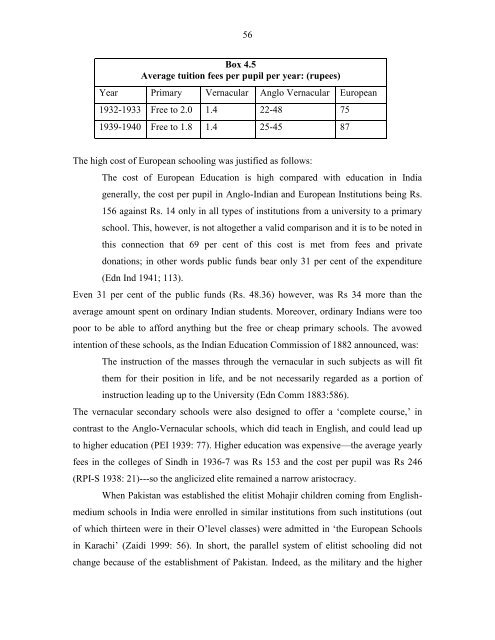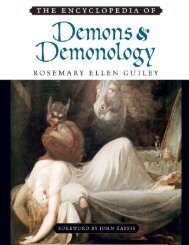DENIZENS OF ALIEN WORLDS
danizen1
danizen1
- No tags were found...
Create successful ePaper yourself
Turn your PDF publications into a flip-book with our unique Google optimized e-Paper software.
56<br />
Box 4.5<br />
Average tuition fees per pupil per year: (rupees)<br />
Year Primary Vernacular Anglo Vernacular European<br />
1932-1933 Free to 2.0 1.4 22-48 75<br />
1939-1940 Free to 1.8 1.4 25-45 87<br />
The high cost of European schooling was justified as follows:<br />
The cost of European Education is high compared with education in India<br />
generally, the cost per pupil in Anglo-Indian and European Institutions being Rs.<br />
156 against Rs. 14 only in all types of institutions from a university to a primary<br />
school. This, however, is not altogether a valid comparison and it is to be noted in<br />
this connection that 69 per cent of this cost is met from fees and private<br />
donations; in other words public funds bear only 31 per cent of the expenditure<br />
(Edn Ind 1941; 113).<br />
Even 31 per cent of the public funds (Rs. 48.36) however, was Rs 34 more than the<br />
average amount spent on ordinary Indian students. Moreover, ordinary Indians were too<br />
poor to be able to afford anything but the free or cheap primary schools. The avowed<br />
intention of these schools, as the Indian Education Commission of 1882 announced, was:<br />
The instruction of the masses through the vernacular in such subjects as will fit<br />
them for their position in life, and be not necessarily regarded as a portion of<br />
instruction leading up to the University (Edn Comm 1883:586).<br />
The vernacular secondary schools were also designed to offer a ‗complete course,‘ in<br />
contrast to the Anglo-Vernacular schools, which did teach in English, and could lead up<br />
to higher education (PEI 1939: 77). Higher education was expensive—the average yearly<br />
fees in the colleges of Sindh in 1936-7 was Rs 153 and the cost per pupil was Rs 246<br />
(RPI-S 1938: 21)---so the anglicized elite remained a narrow aristocracy.<br />
When Pakistan was established the elitist Mohajir children coming from Englishmedium<br />
schools in India were enrolled in similar institutions from such institutions (out<br />
of which thirteen were in their O‘level classes) were admitted in ‗the European Schools<br />
in Karachi‘ (Zaidi 1999: 56). In short, the parallel system of elitist schooling did not<br />
change because of the establishment of Pakistan. Indeed, as the military and the higher












